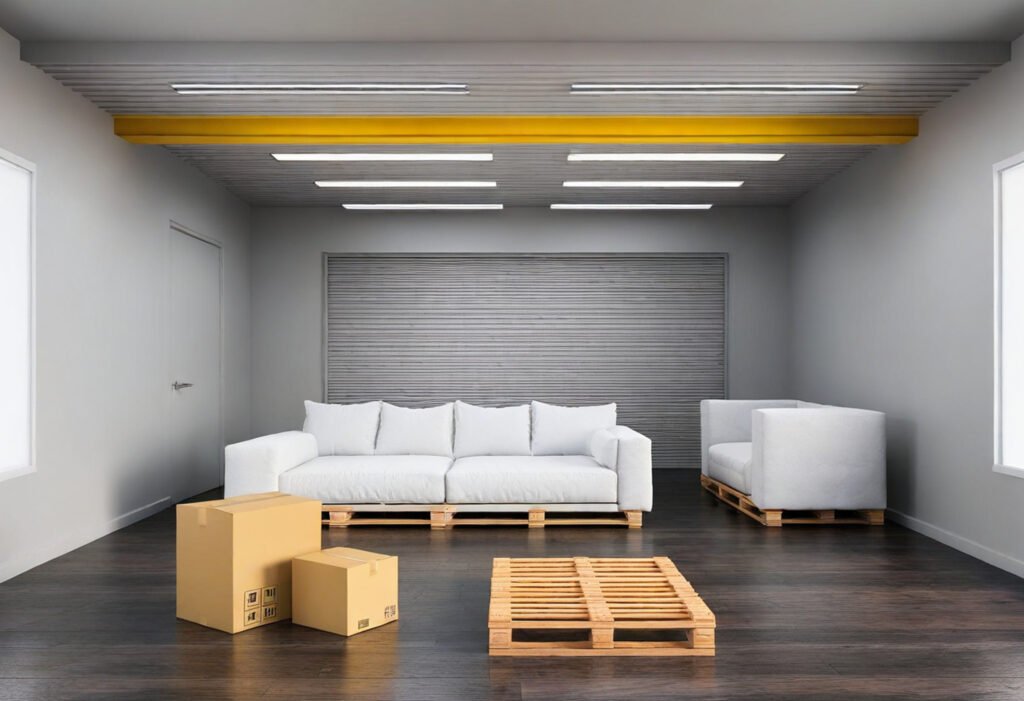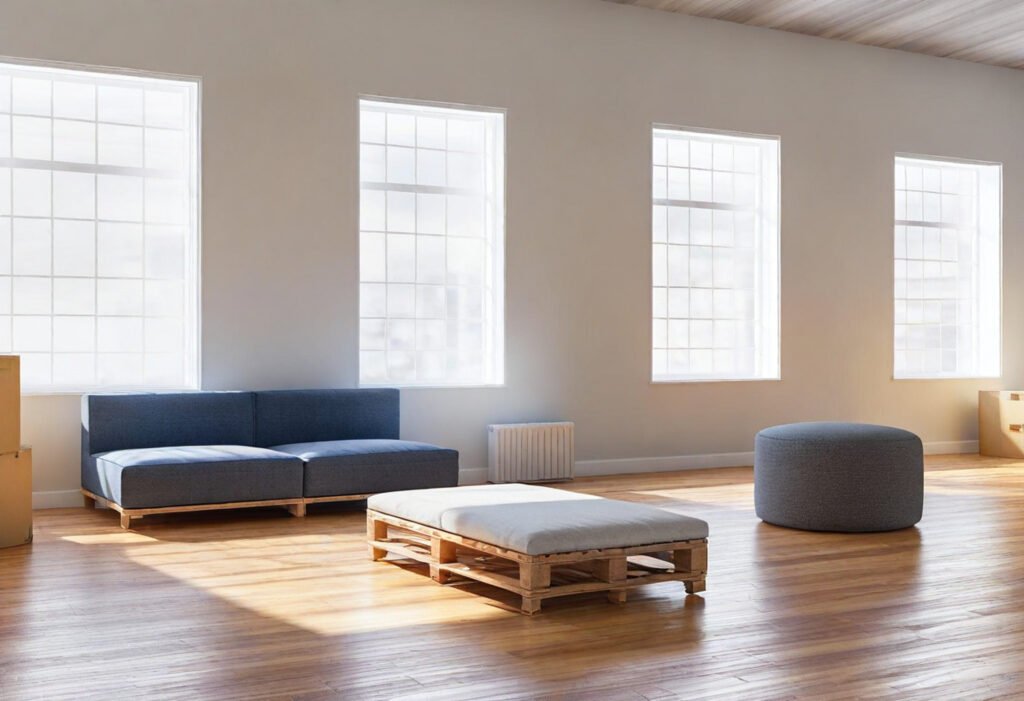Your furniture storage methods can protect valuable pieces from warping, cracking, or mold growth. Wood and leather pieces require extra care, especially when subjected to temperature and humidity changes that can cause damage over time.
Climate-controlled storage units work best to protect your furniture. These units keep temperatures steady between 55 and 80 degrees Fahrenheit. This stable environment prevents moisture damage and keeps your items safe. On top of that, it’s crucial to clean everything really well before storage. Even hidden dirt, skin oils, and sweat can break down materials if you leave them unchecked. Simple old sheets or blankets make better covers than plastic – they shield your furniture from dust while letting it breathe.
This piece covers every detail you need to store furniture the right way. You’ll learn the best cleaning methods and smart ways to arrange your items. We’ll help you decide if climate control is worth the investment and show you how to spot problems early by checking your stored items regularly.
Clean and Prepare Furniture
The first critical step to prepare furniture for storage is proper cleaning. Many people skip this vital task. They don’t realize that even invisible dirt can cause major damage as time passes. A good cleaning protects your investment and will give a better chance of your furniture staying pristine during storage.
Why is cleaning essential before storage
Cleaning furniture before storage does more than improve looks. Dust and dirt act like sandpaper that scratches surfaces when furniture moves during transport or storage. These particles feed mold spores and attract pests that damage furniture. Your skin’s oils and sweat left on surfaces can break down materials and cause lasting damage during long storage periods.
There’s another reason pre-storage cleaning matters – finding existing damage. The cleaning process helps you spot scratches, loose joints, or other problems that need fixing before storage prevents them from getting worse.
How to clean wood, fabric, leather, and metal
Each furniture material needs its own cleaning method:
Wooden furniture needs a good dusting first, followed by cleaning with mild soap and water using a soft cloth. Don’t oversaturate wood surfaces. Apply wood conditioner or polish after cleaning to stop drying and cracking during storage. This protective coating helps wood maintain its natural moisture balance.
Fabric upholstery requires hoovering up crumbs and debris from all crevices. Clean spots with a suitable upholstery cleaner based on fabric type. Deep cleaning needs fabric-specific commercial cleaner, but watch out for too much moisture.
Leather furniture needs special care—vacuum first, then clean with mild leather cleaner using a soft cloth. The leather needs conditioning after cleaning to stay supple and prevent drying or cracking. This step becomes crucial for long-term storage.
Metal components clean best with a mild soap solution or a specialized metal cleaner. Sand away rust with fine-grit sandpaper or steel wool, then add a protective coating to stop oxidation during storage.
Let furniture dry completely to prevent mold
Your furniture must be completely dry before storage. Damp furniture can develop mold and mildew in enclosed storage spaces. Upholstered items need 24-48 hours of drying time after cleaning.
Wet furniture wrapped in plastic creates perfect conditions for mold growth. You can speed up drying with fans or by placing furniture in areas with good airflow. Mold starts growing within 24-48 hours in the right conditions, so thorough drying becomes essential to protect stored furniture.
Disassemble and Protect Each Piece

Clean your furniture really well before you start taking it apart. Breaking down furniture pieces saves space in your storage unit and protects them from damage during the move and storage period.
What to disassemble and why it matters
Breaking down furniture helps protect connection points and joints that get weaker as time passes. You should take apart these core pieces:
- Tables (take off legs to stop bending)
- Bed frames (take apart headboards, side rails, and slats)
- Sofas (remove cushions and legs when possible)
- Shelving units and bookcases (pull-out adjustable shelves)
Your storage unit works better with furniture broken down into parts. The smaller pieces weigh less and move easily through doorways and up stairs, which makes the whole process safer.
Label and store hardware safely
Lost screws, bolts, or brackets can make putting furniture back together a real headache. Put all hardware in plastic bags with labels and tape them right to the furniture piece. Mark spots on tables or beds that have similar parts with a marker. Snap some photos while taking things apart to help you remember how everything fits back together.
Wrap furniture with breathable materials
After breaking down the pieces, wrap each part in protective coverings. Cotton sheets, moving blankets, or furniture covers made for storage work best because they let air flow through. These materials keep dust away and stop moisture from building up and damaging wood and other materials.
Avoid plastic wrap on fabric and leather
Plastic wrap might look like good protection, but it can ruin upholstered and leather furniture. Moisture gets trapped under plastic and creates perfect conditions for mold and mildew. Yes, it is true that even in climate-controlled storage, leather furniture wrapped in plastic can “sweat” and end up with stains or warping. Light cotton covers work better because they let leather and fabric breathe.
Use bubble wrap for glass and fragile parts
Glass tabletops, mirrors, and delicate pieces need extra care. Start by putting packing tape in an X-pattern on glass surfaces to keep them from shattering. Next, wrap these pieces in packing paper and add bubble wrap with the bubbles facing inward to protect them best. Glass stays safest between pieces of cardboard inside sturdy boxes marked “Fragile.”
Plan the Storage Layout
A smart layout strategy helps you store furniture in a storage unit effectively. Good planning protects your items and makes the best use of your space.
Measure furniture and storage units
You should measure each piece of furniture before moving day. Getting the square footage requires the simple multiplication of length and width for each item. The cubic footage gives you a full picture – just multiply length, width, and height together. A furniture stack of 5 feet by 5 feet needs at least 25 square feet of storage space. Bigger furniture collections might need 75-150 cubic feet for medium units or 200-300 square feet for large units.
Sketch a layout for the quickest placement
After measurements, draw a basic sketch of your storage unit layout. This visual plan shows any space limits and helps you use space better. Here are some smart placement tips:
- Put heavy, sturdy items against the walls
- Keep fragile, lighter pieces in the center
- Make clear paths you can use later
- Group similar items together for easy access
The space between standard storage buildings should be 23-28 feet, with 30 feet at the ends. This gives enough room to turn and allows two-way traffic.
Leave space for air circulation
Good ventilation is vital to protect furniture in storage. Don’t pack furniture tightly because it blocks airflow. Keep furniture away from walls and leave drawers and doors slightly open so air can move freely. These steps improve ventilation and stop musty smells and moisture from building up.
Keep items off the ground with pallets
Your furniture needs to stay off concrete floors because concrete can hold moisture. Wooden pallets work great – they’re cheap or free and lift everything nicely. This simple step improves air flow under your items and stops moisture from damaging wooden furniture legs or fabric.
Use Climate-Controlled Units for Long-Term Storage

The storage environment plays a crucial role if you’re storing furniture for more than three months. Your valuable pieces can be saved from deterioration over time with climate-controlled units that provide a stable environment.
Benefits of climate control for wood and leather
Climate-controlled storage protects sensitive materials from extreme temperature fluctuations and humidity changes. Wood furniture can easily get damaged by environmental conditions—it can crack, warp, or even rot due to humidity fluctuations. Leather items behave like human skin and need consistent moisture levels to stay in good condition.
The benefits of climate-controlled storage include:
- Prevention of mold and mildew growth
- Protection against wood swelling or shrinking
- Preservation of fabric quality
- Prevention of metal components from rusting
- Protection against leather cracking or drying out
Climate control is a smart investment, especially with antiques, heirlooms, and high-end furniture pieces where replacement costs are nowhere near the extra storage expense.
Ideal temperature and humidity levels
Climate-controlled facilities maintain temperatures between 55°F and 85°F throughout the year to protect furniture. Wooden furniture does better in a narrower range of 60°F to 80°F.
Humidity control matters just as much—climate-controlled units keep relative humidity levels around 40-60%. This range works best because humidity above 60% creates perfect conditions to grow mold. Levels below 40% can dry out wood and lead to cracking and splitting.
When climate control is not necessary
These benefits are great, but not all furniture needs climate control. Items made of solid hardwoods like oak, teak, or mahogany with durable finishes can handle standard storage conditions. Heavily lacquered, rustic, or distressed wood pieces might do well in regular units if prepared properly.
You might not need climate control in areas with moderate, stable climates that don’t have extreme temperature swings or high humidity levels. If you feel comfortable storing items in your garage or basement, standard storage might be enough to meet short-term needs.
Conclusion
Smart furniture storage needs careful planning and attention to detail. This piece covers everything you need to protect your valuable pieces in storage. A deep clean before storage gets rid of harmful particles that damage materials. Taking apart larger items saves space and keeps stress off important joints.
Your storage unit’s potential depends on smart layout planning. You need enough space between items so air can flow. Using pallets to lift furniture prevents moisture damage. Climate control works best with sensitive materials like wood and leather, especially when you store items for more than three months.
Paying extra for climate-controlled units is worth it for high-quality or sentimental pieces. These units keep ideal temperatures between 55-85°F and humidity at 40-60%. This is a big deal as it means that the risks of warping, cracking, and mold growth drop by a lot. But solid hardwoods can handle standard storage for shorter times.
Regular checks help you catch problems early. The time you spend on proper prep and storage keeps your furniture’s condition intact and protects your investment. These guidelines will keep your furniture in great shape until you need it again.

